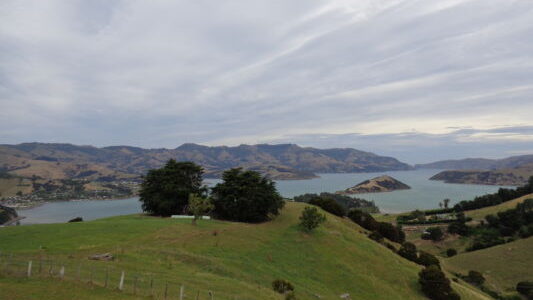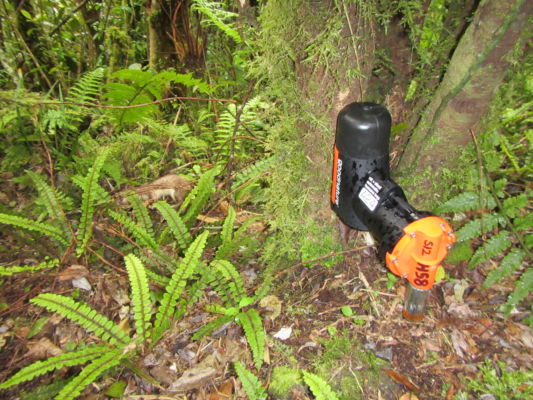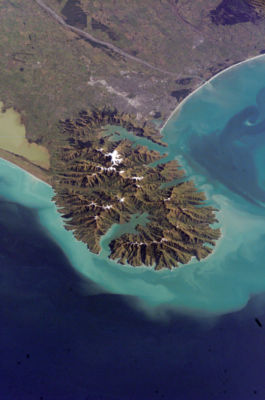In geologically ancient times, Banks Peninsula was a group of volcanic islands and even now is only connected to the mainland by a narrow strip of land. That makes the Peninsula of particular interest as a possible trial site for non-fenced mainland predator eradication.

So could it be done? Using current technology, could Banks Peninsula be made predator free? How much would it cost? How long would it take? And what would the ongoing costs be to maintain that zero predators status?
These are some of the questions answered in a scoping analysis just released by the Rod Donald Banks Peninsula Trust and Lincoln University’s Centre for Land, Environment and People. The Trust instigated the scoping report and funded a summer scholar to assist Lincoln researchers Max Curnow and Geoff Kerr.
The report investigates total eradication (to zero density) of five target species (Norway rats, ship rats, possums, stoats, ferrets) and maintenance of that zero density level. The researchers provide costings for several methods of ground control and, for comparison purposes only, include costings for theoretical aerial eradication using brodifacoum or sodium fluoroacetate (1080).
“Existing predator eradication technology includes distribution of toxins on the ground and from the air, and trapping. Research is seeking to broaden this suite of tools, but for now that is what is available, and what we have evaluated here…. Our primary purpose was to evaluate methods that did not entail aerial poisoning, but we evaluated aerial brodifacoum, as well as aerial sodium fluoroacetate for comparative purposes. We do not believe these aerial poisoning methods are suitable for Banks Peninsula. Aerial brodifacoum has significant adverse environmental consequences… Aerial sodium fluoroacetate has some potential cost advantages, but on its own is least likely to obtain zero density and is not suitable for Peninsula-wide application.”
According to the report’s authors, successful eradication must meet several requirements:
• Every individual of a target species must be exposed to an effective control method.
• The target species must be killed faster than they can reproduce.
• There must be zero immigration of the target species.
Methodology and density of control devices varies depending on species, meaning some species are more difficult and/or expensive to eradicate than others.
“Extermination requires exposure of all target animals to the control method, so home ranges determine how closely control points must be spaced. This varies, by species, as does the type of control apparatus required. We used that information to identify three main predator removal scenarios, for which we derived order of magnitude costs and time required for removal.”

The three scenarios are:
- Baits stations (OSKA) targeting rats, stoats and possums and DOC 250 traps targeting ferrets (but potentially killing some rats and stoats). Total cost estimate: $88 million. Minimum time to eradicate: 7.7 years. “Trap deployment alone, with 100 full-time staff, would take about a year.”
- Single use traps. DOC 150 (rats and stoats), DOC 250 (primarily ferrets, some rats and stoats) and Trapinator (possums). Total cost estimate: $134 million. Minimum time to eradicate: 10.2 years.
- Self-resetting traps (Goodnature). A24 (rats and stoats). A12 (possums). DOC 250 (ferrets). Total cost estimate: $132 million. Minimum time to eradicate: 5.5 years.
For comparison, aerial brodifacoum application with DOC 250 backup would cost appoximately $89 million (with an unacceptable environmental cost) and it would take a mere 47 days to make Banks Peninsula predator free using this method. Aerial 1080 application would cost around $2.9 million for one application, but would not completely eradicate all rats, possums and stoats. Ongoing applications would be needed to maintain low densities. Ferrets would be unaffected.
Once achieved, the predator free status would, (with current techniques and technologies), need to be constantly maintained or we would risk losing all and starting from scratch.

“(Because) there are ongoing opportunities for reinvasion it would be necessary to indefinitely monitor and manage these predators after initial removal… Ongoing costs would be in the order of $1.65 m. per annum, excluding buffer, quarantine and biosecurity measures. Even with a work force of 100 full time employees, eradication would take several years.”
So, achieving the predator free dream with current technologies would not come cheap. The Government’s total budget for a New Zealand-wide PF2050 target is insufficient, with current technologies, to make even Banks Peninsula predator free.
“Non-aerial predator removal is an extremely labour intensive and expensive business, so application at the Banks Peninsula scale is unprecedented. Our estimates are that predator removal operation costs (i.e. exclusive of planning, consent, administration, and ongoing predator management costs) would be in the range of $88m to $134m. However, ongoing costs are also significant… In comparison, the national strategy to eliminate predators from the whole of New Zealand by 2050 has a budget of $84m ($28m from central government on a one-for-two top-up basis for others’ contributions) and the Department of Conservation’s 2016 Battle for our Birds budget was $20.7m for one-off predator reduction operations on 800,000 ha of Conservation land.”
With current techniques and current funding, the numbers just don’t add up. Funding allocations would need to increase by several magnitudes just to get a predator free Banks Peninsula. So what is the answer?
Even assuming that more funding is available, attempting total NZ-wide predator eradication at the moment, using current technologies may not be the best way to spend that funding. Increased investment in developing cheaper, less labour-intensive and more effective technologies looks to be a better investment for the long-term future of a predator free New Zealand, provided enough funding is also invested in predator control in the meantime, to at least ensure our vulnerable wildlife survives to benefit from new developments.
“Even with a significant workforce of 100 full-time equivalent field staff, attaining zero predator densities across Banks Peninsula would take a considerable number of years. Acknowledging that is important to ensure that sufficient long-term funding is available on commencement to take the project to completion – or risk its complete failure in the long run. It is also important to understand the quantum of labour required, and for how long, where volunteer labour is a significant contributor. Loss of volunteers runs exactly the risks as loss of funding – previous investments can be undermined totally.”
Never underestimate the need for volunteer labour, in other words – and never take those volunteers for granted.
“Options to reduce costs and/or labour requirements are to change the programme target to either controlling fewer species, to maintaining low (but not zero) predator densities, improving community engagement, including provision of voluntary labour, or some combination of these. In the future, new technology may provide the answers, but for now is unavailable.”
Thus, in the absence of an unlimited budget – or even with one – the volunteer army on the ground is what’s currently keeping our native species alive. We will continue to depend on that volunteer conservation force until technological developments arrive to reinforce the ground troops.
Conservation volunteers – your country needs YOU!
“There are significant logistical, legal, and financial challenges to achieving a predator free Banks Peninsula. These potential barriers are sensitive to the species targeted and the methods used. We recommend further investigation of the effects of a restricted programme, particularly the exclusion of rats, on conservation outcomes and community support to assess whether a more affordable scheme that could be completed in a much shorter time has merit relative to the proposal we assessed (controlling all five of the target species at zero density).”
The full report has been released by the Rod Donald Banks Peninsula Trust and Centre for Land, Environment and People (Lincoln University) and is freely available online:
Predator Free Banks Peninsula: Scoping Analysis (2017)

